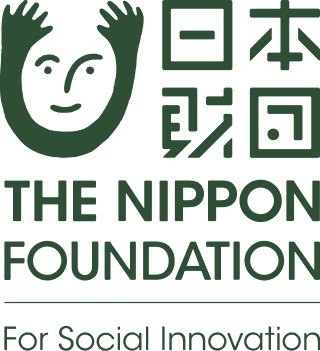This Year’s ‘Dosukoi Beach Clean’ UnderwayChildren enjoy cleaning up beach with sumo wrestlers The Nippon Foundation’s Umi-to-Nippon Project
Dosukoi Beach Clean (Sumo Beach Cleanup – dosukoi is a sumo chant of encouragement), an event where local children and their parents join sumo stablemasters and rikishi (sumo wrestlers) to remove trash from beaches, has begun again this year. This is part of The Nippon Foundation’s Umi-to-Nippon Project (The Ocean and Japan Project), which aims to pass on the importance of the ocean to the next generation, and this particular activity seeks to raise awareness of the maritime environment. This year, five sumo stables (called heya or beya – a group of rikishi who live and train together under a stablemaster) are participating. The first event was held with the Musashigawa Beya at the Katase Kaigan beach in Fujisawa, Kanagawa Prefecture, on August 5. After cleaning up the beach, safe sumo dohyo (the ring for sumo matches) were created in the sand, and the rikishi demonstrated sumo exercises and gave the children a chance to experience sumo, making this an enjoyable day, especially for the children.

Dosukoi Beach Clean is a joint activity with Umisakura, an NGO that has been removing trash and dangerous items from beaches along the Shonan coast of Kanagawa Prefecture annually since 2005. Musashigawa stablemaster Musashigawa Mitsuhide (the former yokozuna grand champion Musashimaru) and 15 currently active rikishi from the stable were joined by local children and their parents, with a total of roughly 150 people participating.
Opportunity for children to interact with active rikishi
Under a hot summer sun that would bring the temperature to above 30 degrees Celsius, the participants gathered at 9:00 at the end of the bridge that connects the beach with the island of Enoshima. Stablemaster Musashigawa and the rikishi arrived wearing shorts and T-shirts, rather than the casual yukata or formal kimono in which they are usually seen in public. After an explanation of the activity, and with vocal encouragement from stablemaster Musashigawa, the participants began picking up trash in the immediate area using tongs and other tools. After only 30 minutes, they had already collected several bags each of burnable and non-burnable trash.


After the children had cleaned up the area, the sand was sieved to make sure that no small items remained. The rikishi then demonstrated stretching exercises that the children tried to copy. Next, two dohyo were drawn in the clean sand, and the children – both boys and girls – tried to push the rikishi out of the dohyo, to the delight of the onlookers. Finally, a hula dance troupe from Yokohama gave a hula demonstration, and the event concluded with a commemorative photograph.


Making the ocean beautiful
The Umi-to-Nippon Project has designated five activity themes – Learn about the ocean; Make the ocean beautiful; Appreciate the ocean; Experience the ocean; and Express the ocean – and the Sumo Beach Cleanup falls under “Make the ocean beautiful.” This is the activity’s third year, and arose from a desire to have sandy beaches where children could play without worrying about trash, nails, glass, or other dangerous items in the sand.
The remaining beach cleanups are scheduled with the Onomatsu Beya at Kasai Rinkai Park in Edogawa Ward, Tokyo, on August 12; with the Shikoroyama Beya at Shonan Bellmare Hiratsuka Beach Park in Hiratsuka, Kanagawa Prefecture, on August 19; with the Otake Beya at Aquamarine Fukushima in Iwaki, Fukushima Prefecture, on August 20; and with the Chiganoura Beya at Marine Park Omaezaki in Omaezaki, Shizuoka Prefecture, on August 26.

The Umi-to-Nippon Project is a joint project being undertaken nationwide by the Cabinet Office’s Headquarters for Ocean Policy, the Ministry of Land, Infrastructure, Transport and Tourism, and The Nippon Foundation. The project seeks to bring attention to the current state of the ocean, including environmental degradation and other crises, and especially to deepen the understanding of and interest in the ocean by the young people of the next generation.
Contact
Communications Department
The Nippon Foundation



